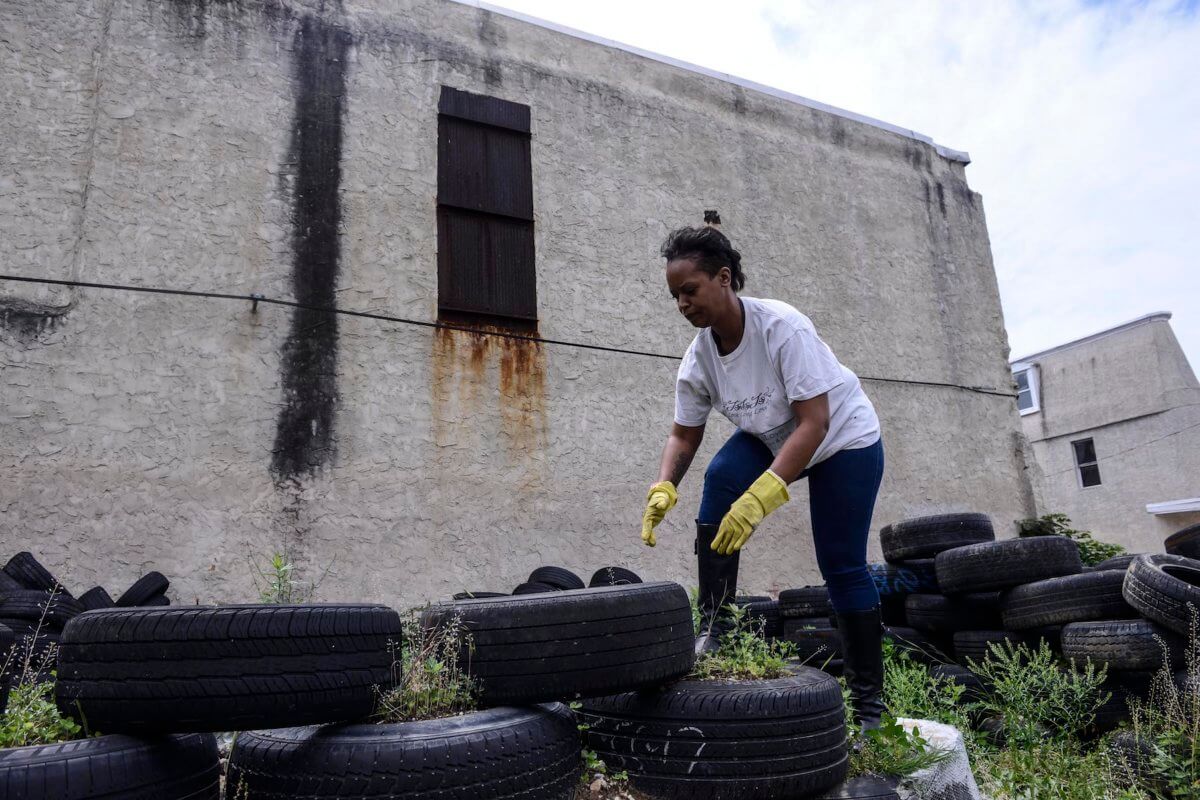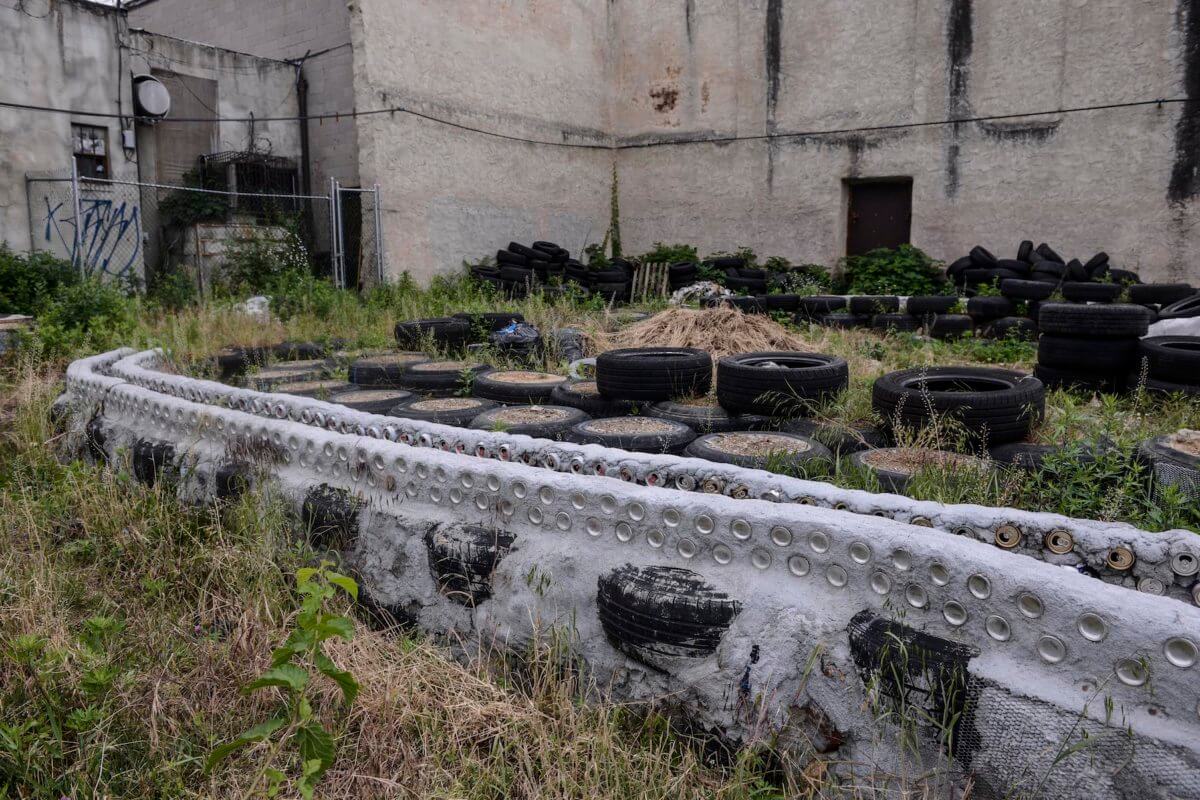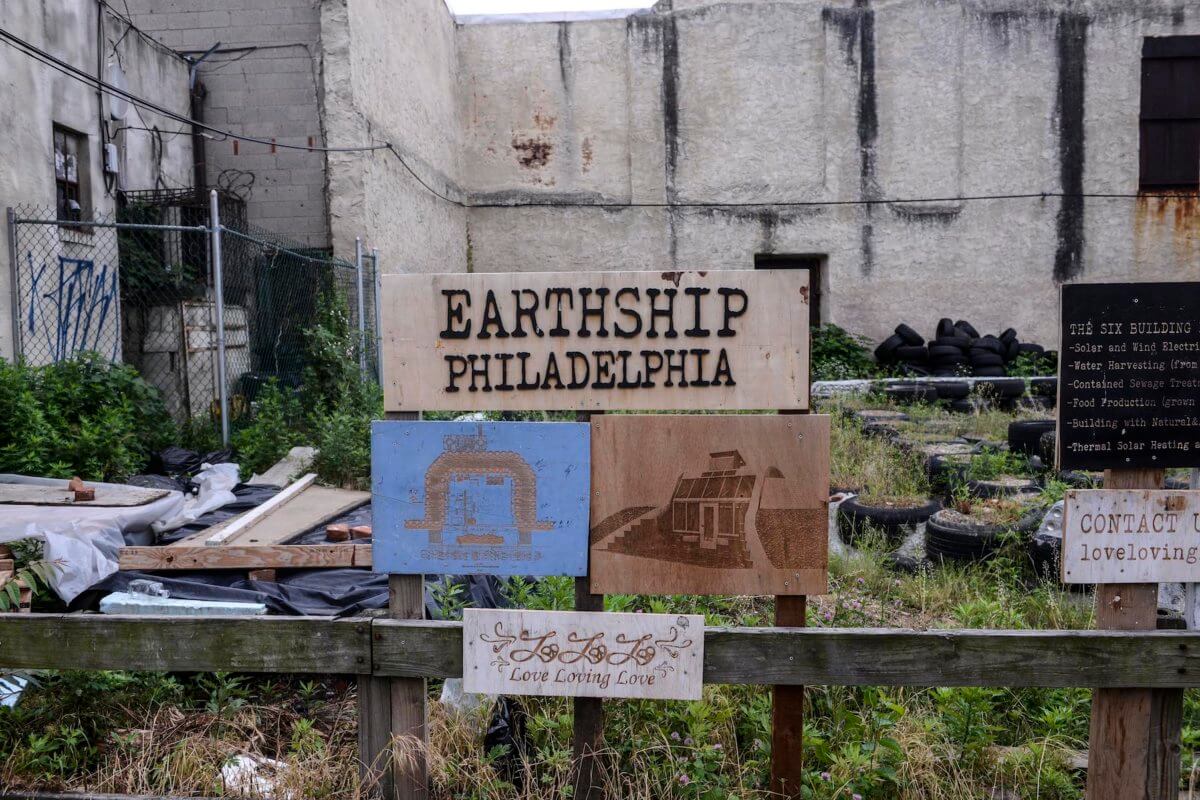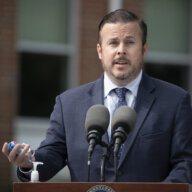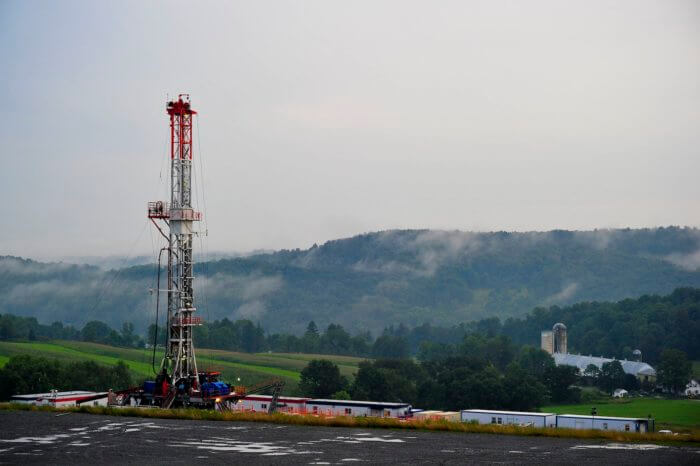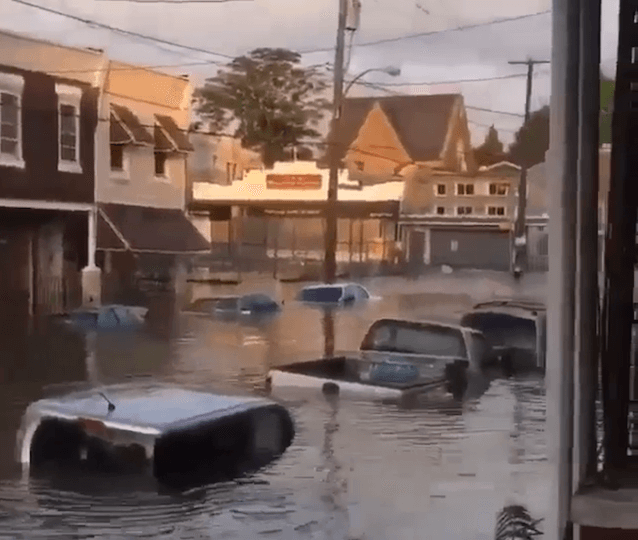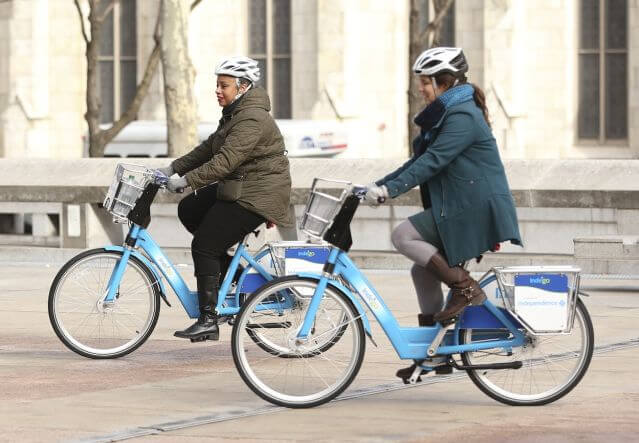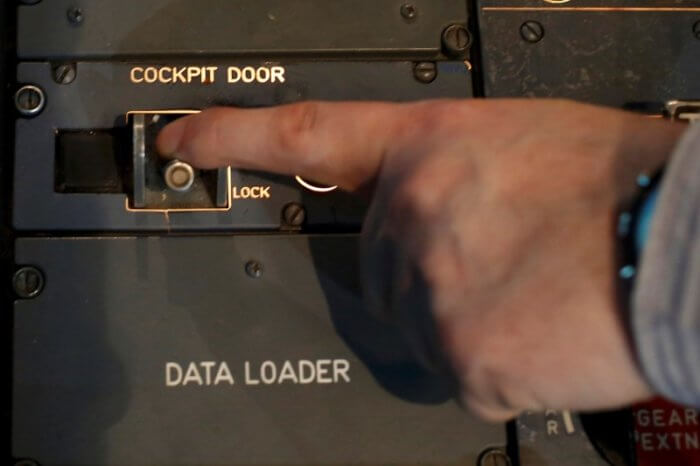The idea to create the world’s first urban Earthship came to Rashida Ali-Campbell while she was sittingin a living room flipping through channels. It was 2007 and Ali-Campbell found herself “inspired and intrigued” after viewing the critically acclaimed independent documentary, Garbage Warrior, on the Sundance Movie Channel. “I watched this film and thought to myself, ‘Wow…this should be right here in Philly,’” Ali-Campbell said.
The documentary chronicled the decades-long work of the prolific sustainable New Mexico-based architect Michael Reynolds and his global crusade to expand Earthships — passive solar houses created of both organic and recycled materials, such as earth-filled tires — for natural disaster-relief and lower-income communities. The Earthship on 41st will serve as office space for both LoveLovingLove and Earthship Biotecture, and as a demonstration space. Organizers estimate the Earthship will be finished and open to the public by the end of the summer. Going on her faith that “God is good and answers prayers,” Ali-Campbell reached out directly to see what can be done in the city after researching his work. Shortly after, she received a phone call from his son, Jonah Reynolds, who – to her surprise – was “very enthusiastic and supportive about it.” Several years of local bureaucracyset them back from being able to acquire the means and access to purchase vacant land in the city to turn into an Earthship.
But Ali-Campbell, who is also the founder of the local non-profit Love Loving Love, Inc. which “works to heal impoverished communities with holistic health and education,” capitalized on the political relationships she developed in the city help raise awareness on the new project she was starting up. “Councilman Kenyatta Johnson and Councilwoman Janie Blackwell were very supportive in helping to inform other members at City Hall what an Earthship actually is…without them and Mayor Nutter’s backing of the project – it would not have gained traction,” Ali-Campbell said. Policy wise, it took the passing of Councilwoman Maria Quiñones Sánchez’s Land Bank Bill last year, pushed by the help of Ali-Campbell’s involvement with the Take Back Vacant Land Coalition, that things finally “looked promising.” “The passing of that bill granted us the opportunity to vie for vacant land at the same level as corporations,” Rashida said.
Shortly after, a guest radio appearance on 900am WURD caught the interest of West Philadelphia resident Thomas L. Miller, who last August donated a 4,500 square feet piece of land located at 675 N 41 St. to the project. It was at this moment that her years of phone conversations and outsourced consulting with Jonah Reynoldswould ultimately forge a more in-depth partnership. He packed up his bags, left New Mexico, and moved to Philadelphia full-time to work on producing “the world’s first urban Earthship.” Reynolds’ entire life has been “devoted to improving the quality of life through sustainable architecture,” he said.
“There is an Earthship in every state and my father and I have done this kind of work in six continents…but there’s never been one done before in an urban area until now,” says Reynolds.
It was in 1979 that the first Earthship was built.Reynolds likened its design to that of the old-fashionedMoon Lander ships of NASA.
Since then, the Earthship’sdesignhas evolved. Decades of experimentation on various weird recycled materials and natural goods would finally produce a model based on self-heating and cooling innovation that can be controlled primarily by “the incorporation of tires, aluminum cans, bottles, and natural mass.” Currently, Rashida and Jonah haveput their partnership into a more permanent endeavor,Earthship360, which plans to mobilize communities all across the city to develop their vacant properties into Earthships. They have gotten lots of outside additional support along the way. “Rob Peitito, our contractor, played a major role in expanding our ability to acquiring more land to develop into something that these communities can appreciate,” Ali-Campbell said. “Earthships don’t require utility bills because they are completely self-generated by the environment and recycled materials.” And to those who call Ali-Campbell and Reynoldscrazyor the Earthship a“post-apocalyptic hippie fortress,” they argue that their motives are far more practical than that.
“The work we are doing are helping to include members in this community that are living in food desserts, under extreme low-employment, and unused vacant lots … Our work is creating a very human society that is breaking down the class warfare in our world,” Reynolds says.



